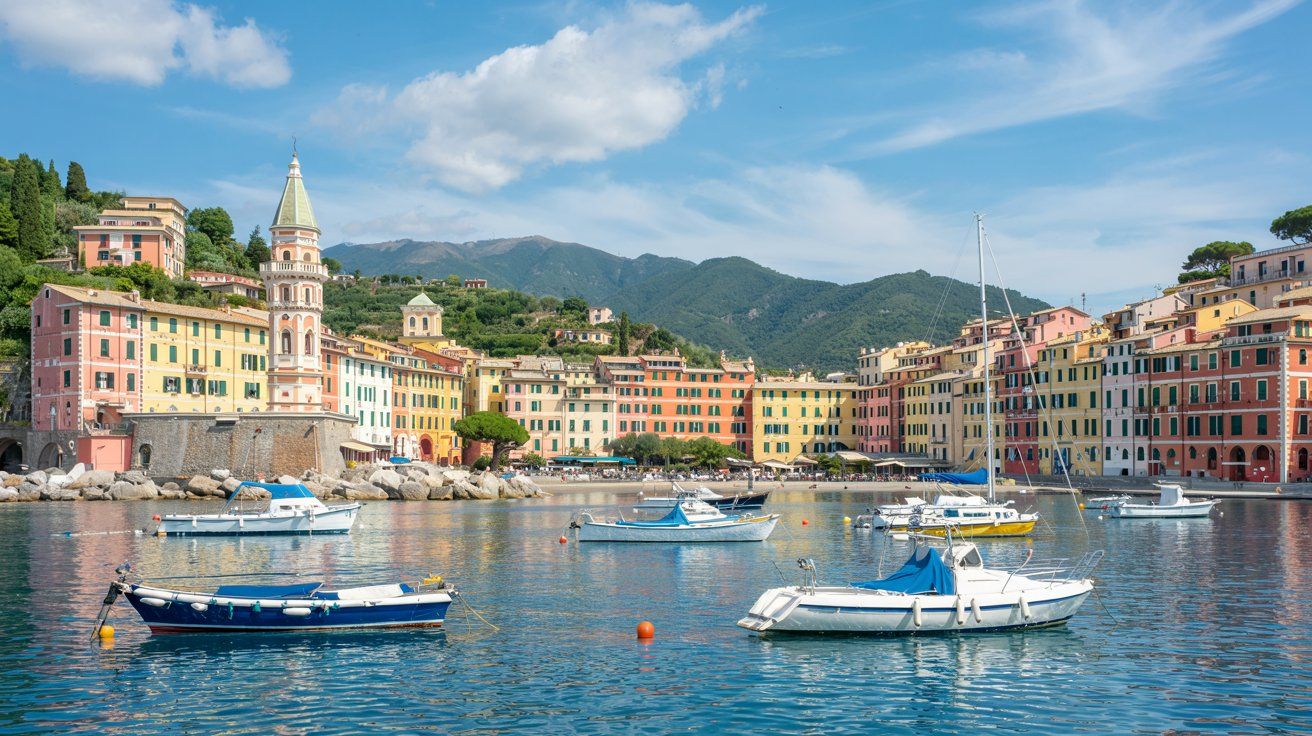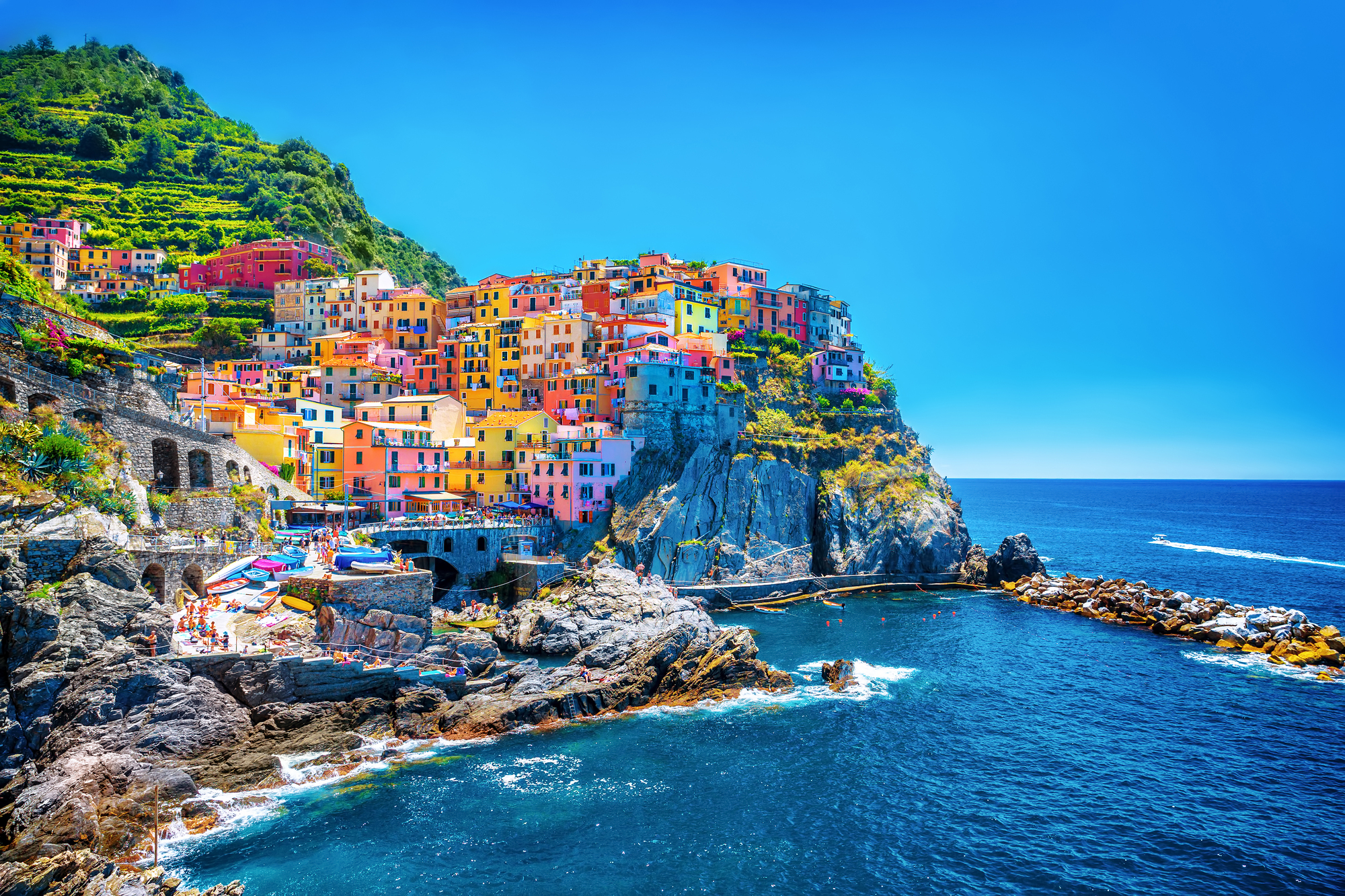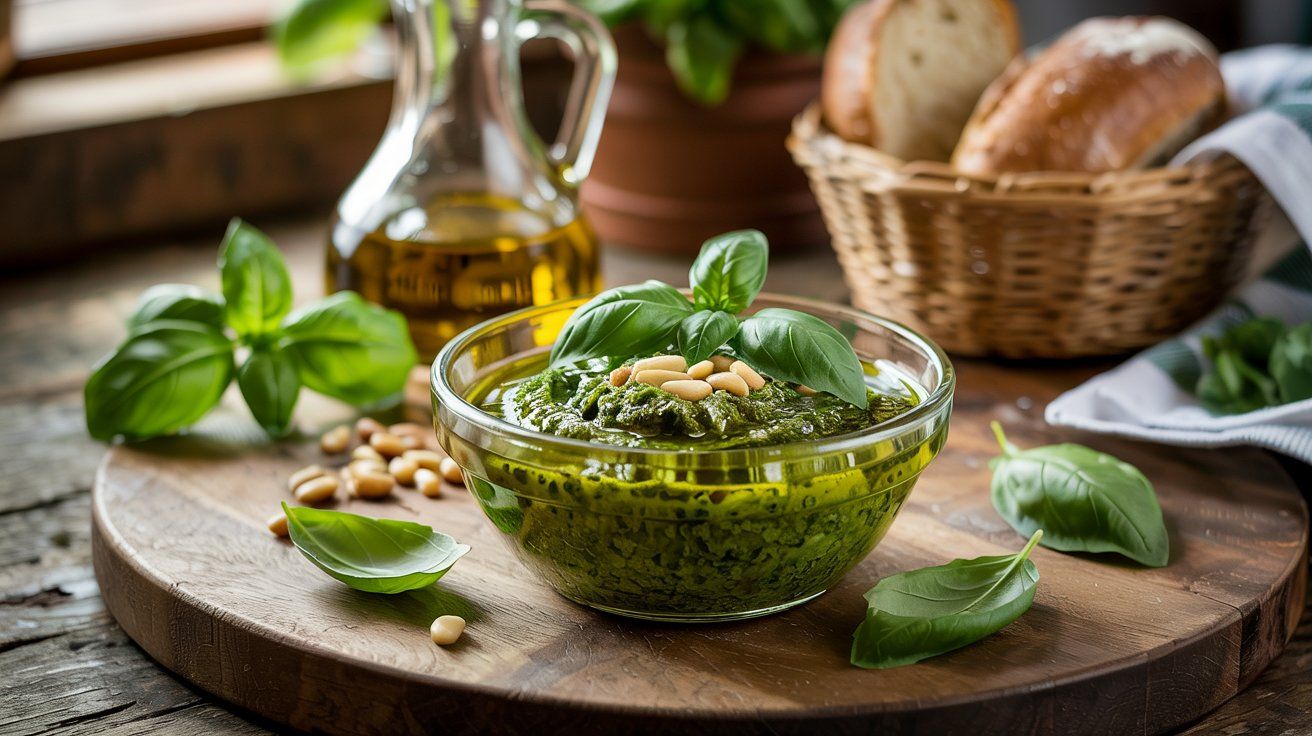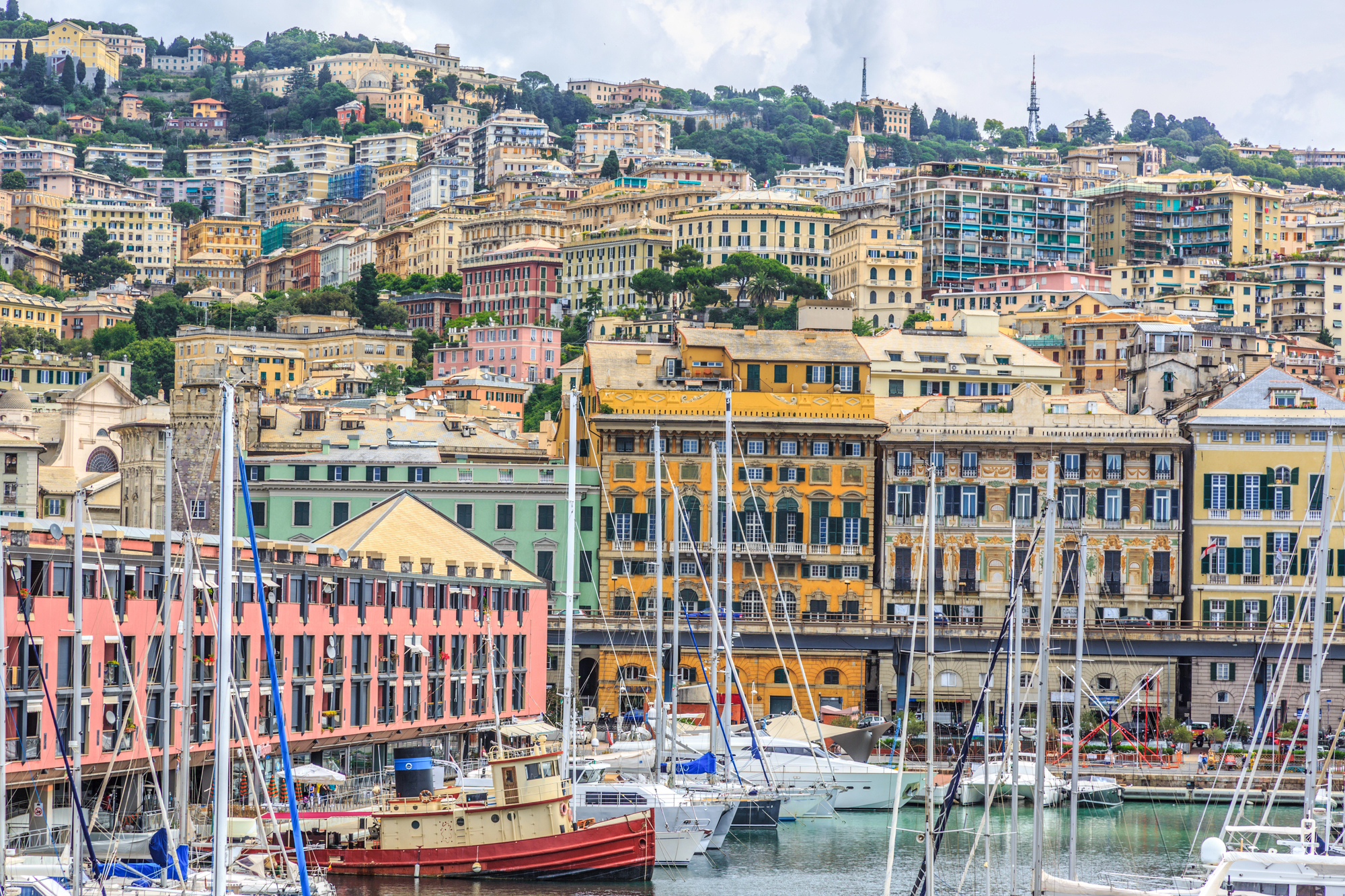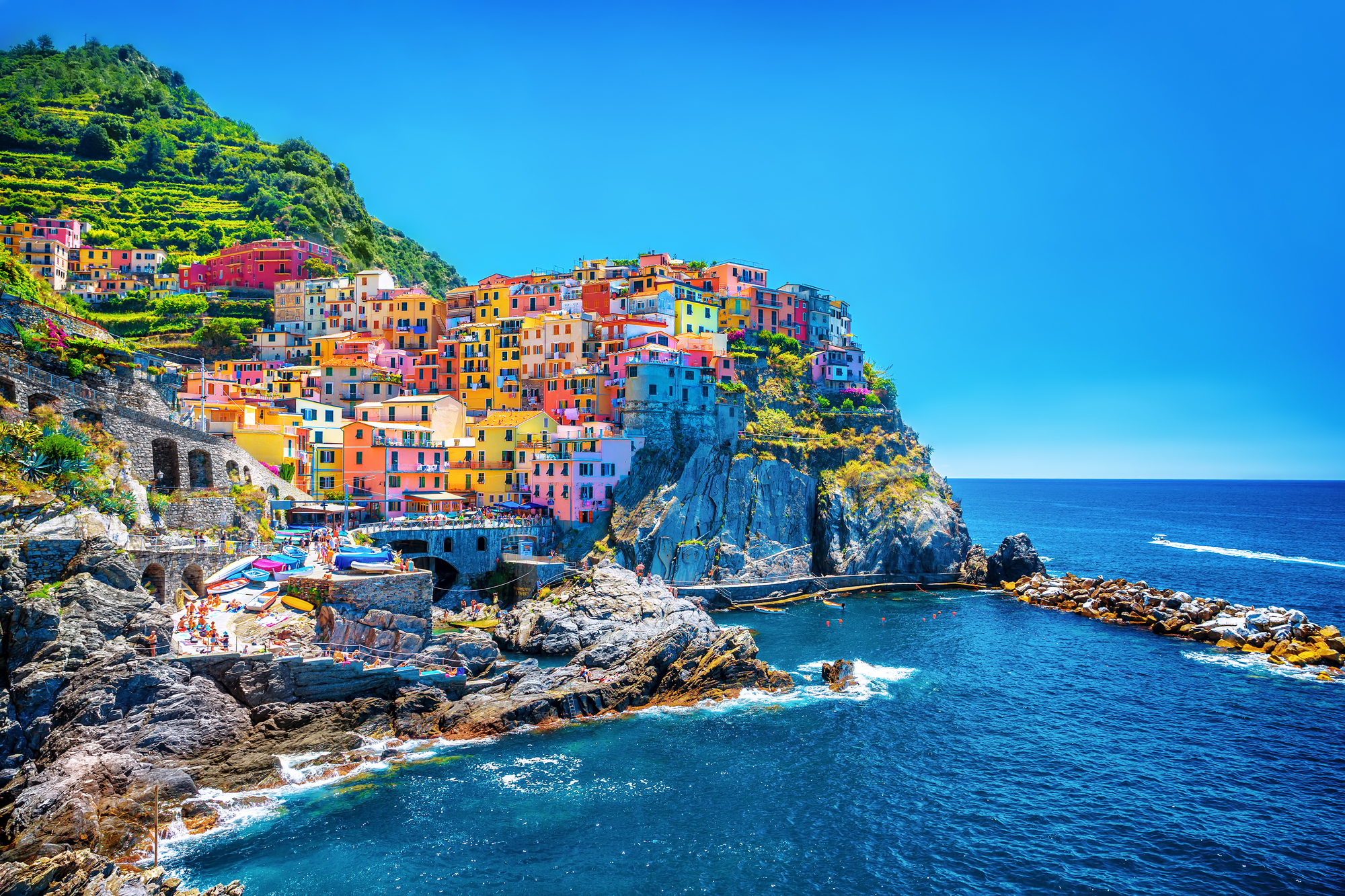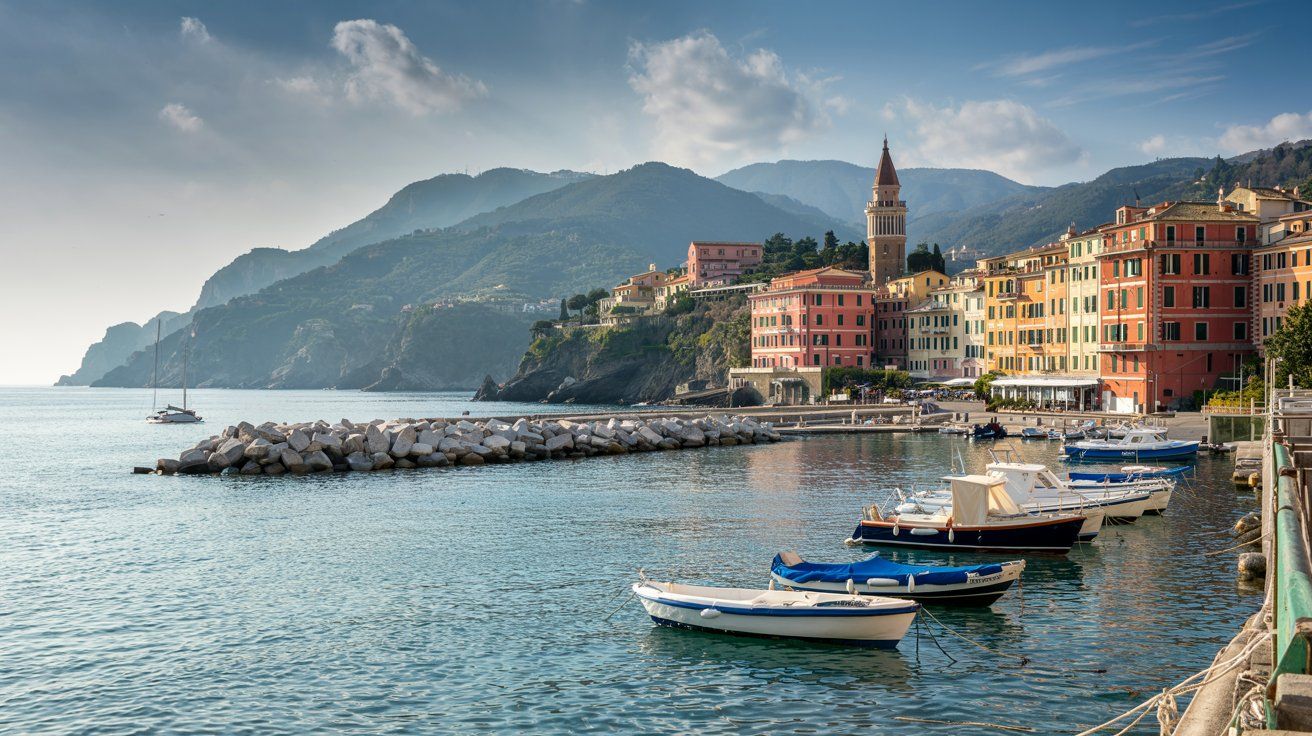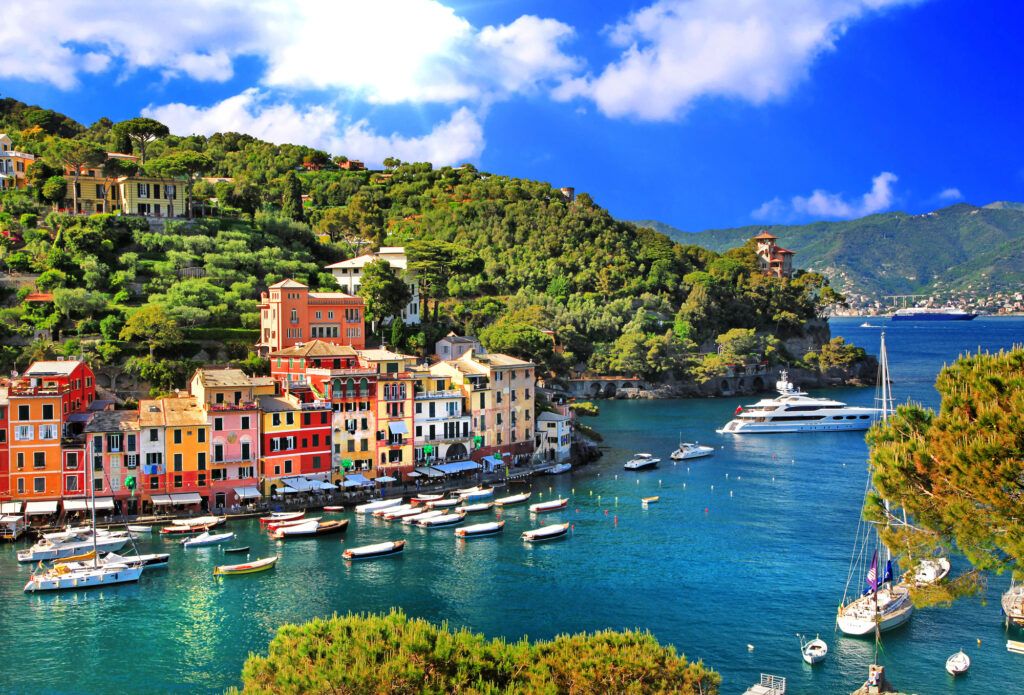You arrive on the Italian Riviera just as November settles in, when the coast slows and the air turns crisp. The crowds have thinned, but the region’s rhythm continues—boats still cross the bays, and the scent of roasted chestnuts drifts through narrow alleys. You discover a quieter Riviera that rewards curiosity with authentic local life and unhurried beauty.
This week, the Italian Riviera feels more open. You can wander scenic trails, visit old landmarks, and eat regional food without fighting through crowds. It’s a change of pace that lets you slip into the landscape and traditions that make Liguria special in November.
Find available hotels and vacation homes instantly. No fees, best rates guaranteed!
Check Availability Now
1) Hike the Cinque Terre trails for stunning coastal views
Walk the Cinque Terre National Park’s coastal paths, linking Monterosso, Vernazza, Corniglia, Manarola, and Riomaggiore. The Blue Trail gives you sweeping sea views and connects each village. Most sections are doable for anyone with moderate fitness.
Start early. Even in November, it’s just nicer before midday. Between Vernazza and Corniglia, you’ll climb steep steps, but the open views of vineyards and the Ligurian Sea are worth it. Wear sturdy shoes—some spots get slick after rain.
If you want to skip the main routes, check out hillside alternatives in this Cinque Terre hiking guide. These quieter trails lead through olive groves and terraced farms, giving you a peek at daily life away from tourists.
Trains link all five towns, so you can hike one stretch and hop a train back. Always check the park’s website for current trail conditions—weather or repairs sometimes close paths.
2) Explore the colorful harbor of Portofino
Portofino’s harbor, whether you arrive by ferry or winding road, curves gently toward the sea. Pastel buildings reflect on calm water, and fishing boats mingle with yachts. It’s lively but never chaotic.
Stroll the cobblestone quay and watch daily life unfold. Locals chat at the docks, visitors sip espresso at open-air cafés. The harbor’s small enough that you can wander at your own pace, noticing painted shutters and terracotta roofs.
Climb up to Castello Brown for a bigger view. You’ll see the bay’s full curve and green hills behind it—just like the travel guides about Portofino describe.
Late afternoon brings softer light and fewer people. Maybe grab a photo or just walk quietly before dinner. Portofino’s magic is in its scale—you can see it all without rushing.
3) Visit San Fruttuoso Abbey accessible by boat
San Fruttuoso Abbey sits tucked in a cove between Camogli and Portofino, reachable only by boat or on foot. Regular boats run from Camogli, Santa Margherita Ligure, and Portofino in the main season. Check schedules so you’re not stranded.
The abbey dates to the 10th century, once home to Benedictine monks, later a place for local fishermen. Its Romanesque arches and stone walls tell stories of the coast’s past. Inside, a small museum covers its restoration and ties to the Doria family.
When you step onto the pebbled beach, you’ll feel how remote it is. The water’s clear—good for a swim if you’re brave. Offshore, divers visit the Christ of the Abyss statue, described in Savoring Italy’s guide.
Facilities are pretty basic, so pack water and essentials. If you’re up for a challenge, hike the steep trail from San Rocco di Camogli for a scenic, demanding route.
4) Stroll through the historic lanes of Sanremo
Step into Sanremo’s old quarter, La Pigna, through the 14th‑century Porta di Santo Stefano. Narrow alleys twist uphill to quiet terraces with sea views. The layout’s tight, almost fortress-like, built to protect from old invasions.
Shops and homes crowd together, giving you a sense of how closely people once lived. Locals still use these lanes—laundry hangs overhead, voices echo off the stone.
Take your time in the tiny piazzas and stairways. The architecture mixes medieval arches with some Baroque flair. There’s a local guide to Sanremo’s old heart if you want more detail.
After exploring, wander down to the promenade for a coffee or gelato. The contrast between the hushed upper town and the lively coast shows off Sanremo’s layers—history and modern life still bumping into each other.
5) Dine on fresh seafood at a seaside trattoria
Seafood’s at the heart of life on the Riviera. Fishing boats head out early, and trattorias often buy the catch straight from them. Menus shift daily, depending on what the sea gives.
In Camogli, a fishing village that still feels real, you can dig into anchovies, mussels, or grilled squid while watching boats drift back to port. The pace is slow here—nobody’s rushing you through a meal. Adventurous Kate has more about Camogli’s food scene.
Across the coast, seaside restaurants keep it simple—olive oil, lemon, local herbs, no heavy sauces. It’s all about freshness, like you’ll read in Italian Riviera dining guides.
Sure, you might pay extra for a table right by the water, but the sound of the sea and the view feel worth it. Even the humblest trattorias serve seafood that captures the region’s maritime spirit. Eating here really connects you to the Riviera’s working coast.
6) Relax on the beaches of the Riviera at sunset
End your day with a walk along the coast as the sun drops over the Ligurian Sea. Beaches near Santa Margherita Ligure and Sestri Levante are calm in November, with space to unwind and no crowds. The air’s cool, but sometimes the sea still holds a little warmth.
Bring a light jacket and find a spot on the stones or a bench. Locals gather to chat or fish as the sky goes from gold to pink. The light softens the waterfront’s colors.
Elegant resorts, charming apartments, and vacation rentals with immediate confirmation. From Portofino to Cinque Terre, discover the most beautiful coastal towns of Liguria!
See Available Properties
If you want to see more, check out the most beautiful Italian Riviera beaches from Ponente to Levante. Some are framed by cliffs, others by tiny harbors. Trains and coastal paths connect many of them.
Stick around until dusk. Watching the lights flicker on across the bay, with the waves and salty air, you’ll get why these quiet moments mean so much here.
7) Tour the botanical gardens of Villa Hanbury
Wander the Giardini Botanici Hanbury near Ventimiglia—one of the Mediterranean’s biggest botanical gardens. The 18-hectare estate spills down the Mortola promontory, offering sea views and quiet paths lined with plants from all over the world.
Sir Thomas Hanbury, an English philanthropist, started the gardens in 1867 as a place to acclimate exotic species. Now you’ll find over 5,800 types, from tropical to Mediterranean, all arranged by climate and origin.
The gardens wrap around the 16th‑century Villa Hanbury, a restored home that adds some history to your walk. You’ll pass terraced slopes, shaded pergolas, and stone stairs connecting the garden’s different levels.
Give yourself a couple hours—some paths are steep, so wear good shoes and bring water. The gardens stay open year‑round, but spring and autumn are the sweet spots for weather and plant variety.
For route ideas, check the official visitor itinerary with maps and highlights.
8) Discover local art galleries in La Spezia
La Spezia’s art scene is easy to dive into—several small, well-curated galleries showcase both regional and contemporary works. The city’s compact, so you can visit a few in an afternoon.
Start with the art galleries in La Spezia, where local painters and sculptors show pieces inspired by Ligurian landscapes and sea life. Exhibits rotate often, so there’s usually something new.
Most galleries sit near the historic center, close to cafés and artisan shops. You might step from a modern show into a quiet 19th‑century square. This mix of old and new just feels like La Spezia.
If you want more structure, the museums and exhibitions in La Spezia cover everything from archaeology to modern design. Entry fees are low, and you can walk from the main train station.
The vibe is calm, not crowded. These galleries focus on quality, not size—a relaxed way to see how local artists interpret life on the Riviera.
9) Take a boat trip to Palmaria Island
Hop a ferry from Portovenere, and in minutes you’re on Palmaria Island. The ride’s about 5 euros round trip, with great views of the Gulf of La Spezia. Boats run on a limited schedule, so check times to avoid a long wait.
Once you land, follow marked trails through pine woods and along rocky cliffs. Paths range from easy to a bit challenging, but most folks can handle them. Hike up for a wide view of the coast and the nearby Tino and Tinetto islands (which are off-limits due to military use).
In summer, you can catch ferries from La Spezia and Lerici too, or join private boat tours to Palmaria Island. Some tours stop for swimming at Byron Cave or Pozzale Beach.
Palmaria’s coves and pebble shores offer a quieter vibe than the mainland. Bring water and light shoes—outside the main dock, facilities are sparse. A few cafés open near the landing in season, serving simple lunches and local wine.
10) Attend a wine tasting in a Ligurian vineyard
Liguria’s hillside vineyards produce crisp whites and light reds that suit the coast’s climate. Many small estates invite visitors for tastings—usually guided, with local grapes like Vermentino and Pigato featured. Sometimes you’ll get a short walk through terraced vines with sea views.
Easy booking across stunning accommodations from historic hotels to modern retreats. Pastel-colored buildings and crystal waters create the perfect Mediterranean escape!
Secure Your Italian Getaway
Several wineries near La Spezia and Albenga offer tours if you book ahead. Compare options on Tripadvisor’s list of Liguria wine tasting tours or browse Winetourism.com’s overview of Ligurian wineries. Each spot has its own style, setting, and tasting approach.
The mood is relaxed, not stuffy. Some places serve cheese or focaccia with the wines, others keep it simple.
If you like flexibility, try Winalist’s curated selection of Ligurian vineyards, where you can filter by region and cancellation policy. Tastings usually last about an hour, so they fit easily into a day trip.
Wear comfortable shoes for the uneven ground. Public transport’s limited in rural areas, so renting a car or arranging a driver is the way to go if you want to visit more than one winery.
Understanding the Italian Riviera in November
You’ll find quieter streets, milder weather, and a slower pace along the Ligurian coast. If you’re someone who likes chatting with locals, lingering over a meal, or wandering without elbowing through crowds, November might just be your month.
Weather and Climate Insights
November cools things down, but it’s rarely uncomfortable. Most days sit between 12°C and 18°C (54°F–64°F), though evenings can slip to about 8°C (46°F). Rain shows up now and then, especially around Genoa or La Spezia, so a little flexibility goes a long way.
The sea hovers near 18°C (64°F)—bracing, sure, but some folks still take a quick dip if the sun’s out. Bring a light jacket, waterproof shoes, and layers; you’ll want to peel things off or bundle up as you wander hillside alleys or coastal trails.
Daylight sticks around for 9 to 10 hours, so it’s smart to start your day early if you want to fit everything in. The air has that crisp, salty tang, and if you head inland, you might catch the scent of olive harvests drifting through the countryside. MominItaly.com’s November guide points out the drop in crowds and prices, which makes a slower, more thoughtful trip possible.
Local Events and Cultural Highlights
You won’t see big festivals this time of year, but November’s all about local flavor. Villages put on olive oil tastings, truffle fairs, and harvest markets. If you’re in Imperia or Levanto, don’t skip the food stalls—focaccia, roasted chestnuts, and local wines are everywhere.
Museums and galleries are open, and without the usual lines, you can really take your time with Genoa’s maritime history or Savona’s art.
Early in the month, All Saints’ Day shifts the mood—families visit cemeteries, and bakeries fill up with special pastries. DiscoverItalianRiviera.com’s weekly guide describes things as calm and community-focused; it’s a side of the Riviera that’s easy to miss in summer.
Travel Tips for Visiting the Italian Riviera
Getting around is pretty straightforward, and a little planning makes the experience way more relaxed. If you know how to hop between towns and what’s likely to show up on local menus, you’ll spend less time worrying and more time soaking up the coast.
Transportation and Getting Around
Trains run up and down the coast from La Spezia to Ventimiglia—they’re cheap, frequent, and save you a headache. You can check schedules and routes on Tripadvisor’s Italian Riviera guide, which also lists attractions near each stop.
If you want to poke around inland villages like Dolceacqua or Pigna (see the 10-day Italian Riviera road trip itinerary), a car is handy. Just know parking in old town centers is tight, and the roads can get pretty narrow—sometimes it feels like you’re squeezing through history itself.
Ferries connect places like Cinque Terre, Portofino, and San Fruttuoso. It’s a great way to skip traffic and get a sea view, though schedules can change with the season. Plenty of towns are close enough to walk between, but bring sturdy shoes—those coastal paths aren’t always gentle.
| Mode | Best For | Notes |
|---|---|---|
| Train | Major towns | Frequent, affordable |
| Car | Inland routes | Limited parking |
| Ferry | Scenic travel | Seasonal schedules |
Seasonal Dining Recommendations
Restaurants along the Riviera tend to switch up their menus with whatever’s just been harvested nearby. In November, you might spot mushroom risotto, chestnut pasta, or fresh anchovies from Monterosso. Lots of trattorias close midweek—definitely check their hours before you head out.
Try to find those tiny osterias where chefs love showing off Ligurian olive oil and whatever herbs are in season. Never Ending Voyage’s guide mentions that trofie al pesto sticks around all year, and honestly, I’d be surprised if you didn’t see it on every menu.
Wine lists lean heavily on Pigato and Vermentino—both crisp whites, perfect with seafood. If you’re up for dessert, castagnaccio is a chestnut flour cake that pops up everywhere in autumn. Try eating on the early side if you want to skip the crowds; most locals don’t show up until later in the evening.
From seaside palazzos to hillside villas, find your perfect stay along this stunning stretch of Mediterranean coastline. Instant booking with best price guarantee!
Browse Accommodations Now

